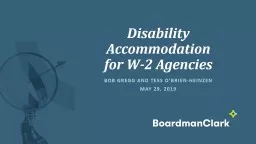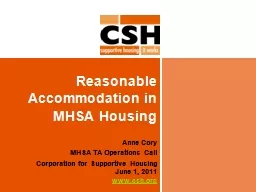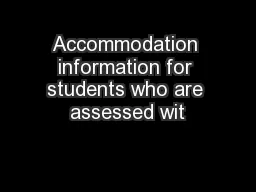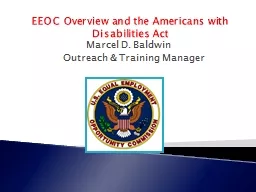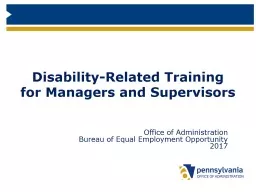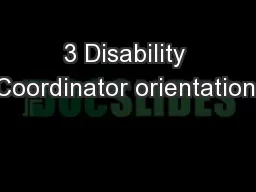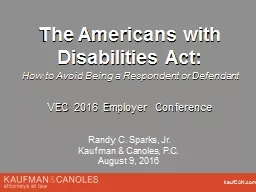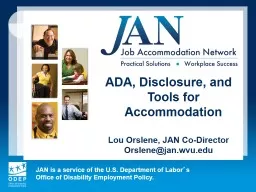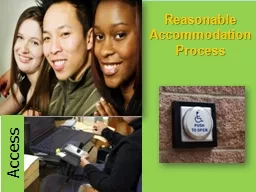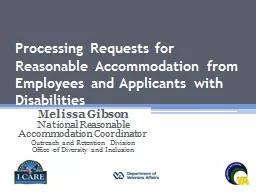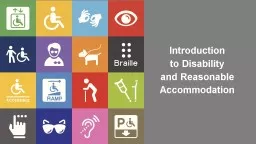PPT-Disability Accommodation
Author : celsa-spraggs | Published Date : 2020-04-05
for W2 Agencies Bob Gregg and tess obrienheinzen May 29 2019 Agenda Legal PrimeR When are obligations triggered in the w2 process Providing reasonable accommodations
Presentation Embed Code
Download Presentation
Download Presentation The PPT/PDF document " Disability Accommodation" is the property of its rightful owner. Permission is granted to download and print the materials on this website for personal, non-commercial use only, and to display it on your personal computer provided you do not modify the materials and that you retain all copyright notices contained in the materials. By downloading content from our website, you accept the terms of this agreement.
Disability Accommodation: Transcript
Download Rules Of Document
" Disability Accommodation"The content belongs to its owner. You may download and print it for personal use, without modification, and keep all copyright notices. By downloading, you agree to these terms.
Related Documents

